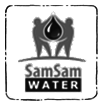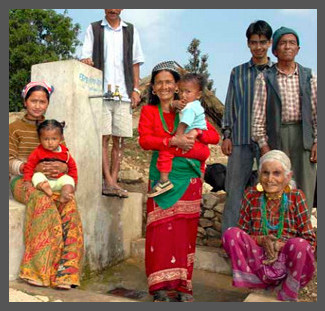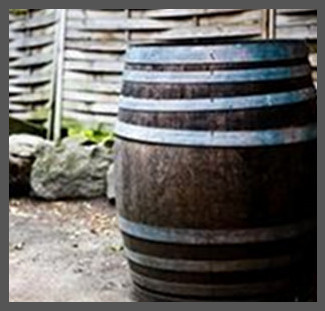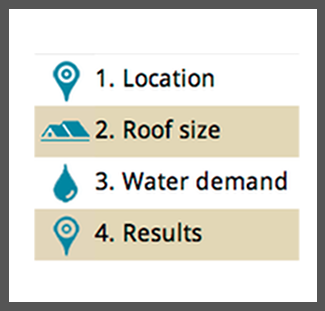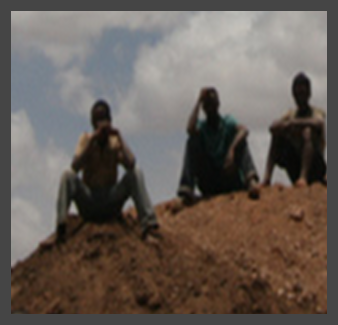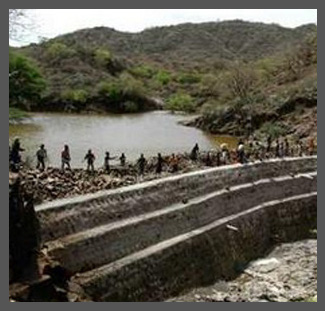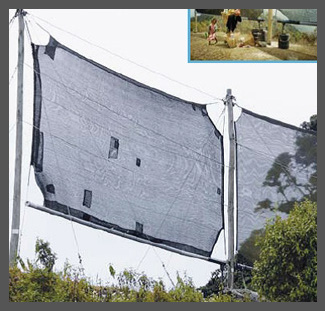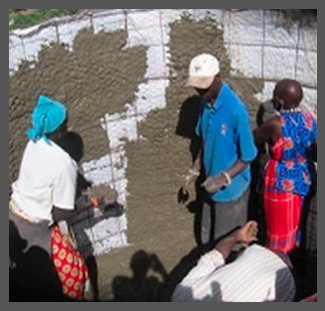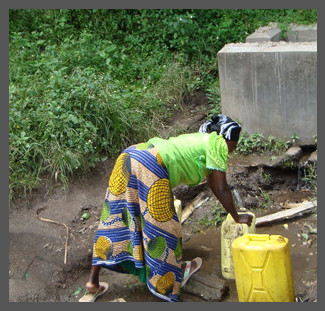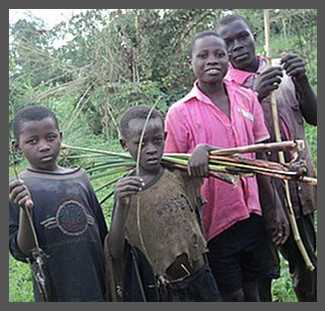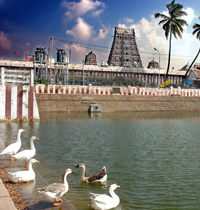Difference between revisions of "Water Portal / Rainwater Harvesting"
m (Reverted edits by Winona (talk) to last revision by Hans Merton) |
|||
| Line 1: | Line 1: | ||
| − | {{Language-box|english_link=Rainwater Harvesting | hindi_link=वर्षा जल संचयन | malayalam_link=മഴവെള്ള സംഭരണം | tamil_link=மழைநீர் சேகரிப்பு | + | {{Language-box|english_link=Rainwater Harvesting|french_link=Français: coming soon|spanish_link=Captación de Agua de Lluvia|hindi_link=वर्षा जल संचयन|malayalam_link=മഴവെള്ള സംഭരണം|tamil_link=மழைநீர் சேகரிப்பு | korean_link=빗물 집수 | chinese_link=coming soon}} |
[[Image:RAIN_logo.jpg|right|100px|link=http://www.rainfoundation.org/]] | [[Image:RAIN_logo.jpg|right|100px|link=http://www.rainfoundation.org/]] | ||
[[Image:akvopedia logo.png|right|100px|link=http://akvopedia.org/wiki/Main_Page]] | [[Image:akvopedia logo.png|right|100px|link=http://akvopedia.org/wiki/Main_Page]] | ||
| Line 13: | Line 13: | ||
<br> | <br> | ||
| − | <div style=" background-color: #fff; -moz-border-radius: 2px; -webkit-border-radius: 2px; border: | + | <div style=" background-color: #fff; -moz-border-radius: 2px; -webkit-border-radius: 2px; border: 1px solid #d8d8d8; padding: 2px;"> |
| − | {| border="0" cellpadding="0" cellspacing=" | + | {| border="0" cellpadding="0" cellspacing="1" style="width: 100%; background-color: #fff" |
| − | |<center> <font size="3" color="#555555"> '''Rainwater Harvesting TOOLS''' <font color="#8C8C8C">- simple methods applicable to project planning</font></font> </center> | + | |<center> <font size="3" color="#555555"> '''Rainwater Harvesting TOOLS''' <font color="#8C8C8C">- simple methods applicable to project planning</font></font> </center> |
| − | |} | + | |} |
| − | </div> | + | </div> |
| − | <div style=" background-color: #efefef; text-align: center; -moz-border-radius: 2px; -webkit-border-radius: 2px; border: | + | <div style=" background-color: #efefef; text-align: center; -moz-border-radius: 2px; -webkit-border-radius: 2px; border: 2px solid #DEDEDE; padding: 3px;"> |
| − | {|cellpadding=" | + | {|cellpadding="3" cellspacing="0" width="100%" |
|- | |- | ||
|colspan="5" style="background-color:#efefef;"| | |colspan="5" style="background-color:#efefef;"| | ||
|- | |- | ||
| − | |style="background:#efefef;"|[[Image: | + | |style="background:#efefef;"|[[Image:3R icon.png|center|80px|link=3R (Recharge, Retention & Reuse)]] |
| − | |style="background:#efefef;"|[[Image: | + | |style="background:#efefef;"|[[Image:financing streams icon.png|center|80px|link=Business Development - Micro-financing]] |
| − | |style="background:#efefef;"|[[Image: | + | |style="background:#efefef;"|[[Image:MUS icon.png|center|80px|link=Multiple Use Services (MUS)]] |
| − | |style="background:#efefef;"|[[Image:samsam | + | |style="background:#efefef;"|[[Image:samsam logo.png|center|80px|link=SamSam RWH Tool]] |
|- | |- | ||
| − | |style="background:#efefef;"|<center>[[3R (Recharge, Retention & Reuse) | 3R (Recharge, <br>Retention & Reuse)]]</center> | + | |style="background:#efefef;"|[[Image:WUMP photo small.jpg|center|120px|link=3R (Recharge, Retention & Reuse) ]] |
| + | |style="background:#efefef;"|[[Image:Nepal micro small.jpg|center|120px|link=Business Development - Micro-financing]] | ||
| + | |style="background:#efefef;"|[[Image:RWH barrel.jpg|center|120px|link=Multiple Use Services (MUS)]] | ||
| + | |style="background:#efefef;"|[[Image:samsam image.png|120px|link=SamSam RWH Tool]] | ||
| + | |- | ||
| + | |style="background:#efefef;"|<center>[[3R (Recharge, Retention & Reuse) | 3R (Recharge, <br>Retention & Reuse)]]</center> | ||
|style="background:#efefef;"|<center>[[Business Development - Micro-financing | Business Development -<br> Micro-financing]]</center> | |style="background:#efefef;"|<center>[[Business Development - Micro-financing | Business Development -<br> Micro-financing]]</center> | ||
| − | |style="background:#efefef;"|<center>[[Multiple Use Services (MUS)|Multiple Use | + | |style="background:#efefef;"|<center>[[Multiple Use Services (MUS)|Multiple Use Services (MUS)]]</center> |
| − | |style="background:#efefef;"|<center>[[SamSam RWH Tool|SamSam | + | |style="background:#efefef;"|<center>[[SamSam RWH Tool|SamSam RWH Tool]]</center> |
|- | |- | ||
| − | |colspan="5" style="background-color:#efefef;" | | + | |colspan="5" style="background-color:#efefef;"| |
|- | |- | ||
| − | |colspan="5" style="background-color:#DEDEDE;" | | + | |colspan="5" style="background-color:#DEDEDE;"| |
|- | |- | ||
| − | |colspan="5" style="background-color:#efefef;" | | + | |colspan="5" style="background-color:#efefef;"| |
| − | |- | + | |- |
| − | |style="background:#efefef;"|[[Image:rain is gain small.png|center| | + | |style="background:#efefef;"|[[Image:rain is gain icon.png|center|80px|link=Rain is Gain Tool]] |
| − | |style="background:#efefef;"|[[Image:gis small.png |center| | + | |style="background:#efefef;"|[[Image:map icon.png|center|80px|link=Rainwater Harvesting GIS Map]] |
| − | |style="background:#efefef;"|[[Image:wash sustain small.png |center| | + | |style="background:#efefef;"|[[Image:ecosystem wash bw icon.png|center|80px|link=WASH Environmental Sustainability Assessment]] |
| + | |- | ||
| + | |style="background:#efefef;"|[[Image:rain is gain small.png|center|120px|link=Rain is Gain Tool ]] | ||
| + | |style="background:#efefef;"|[[Image:gis small.png |center|120px|link=Rainwater Harvesting GIS Map]] | ||
| + | |style="background:#efefef;"|[[Image:wash sustain small.png |center|120px|link=WASH Environmental Sustainability Assessment]] | ||
|- | |- | ||
|style="background:#efefef;"|<center>[[Rain is Gain Tool]]</center> | |style="background:#efefef;"|<center>[[Rain is Gain Tool]]</center> | ||
| Line 50: | Line 59: | ||
</div> | </div> | ||
<br> | <br> | ||
| − | <div style=" background-color: #fff; -moz-border-radius: 2px; -webkit-border-radius: 2px; border: | + | <div style=" background-color: #fff; -moz-border-radius: 2px; -webkit-border-radius: 2px; border: 1px solid #d8d8d8; padding: 3px;" > |
| − | {| border="0" cellpadding="0" cellspacing=" | + | {| border="0" cellpadding="0" cellspacing="1" style="width: 100%; background-color: #fff" |
| − | |<center> <font size="3" color="#555555"> '''Rainwater Harvesting TECHNOLOGIES''' <font color="#8C8C8C">- technical construction details, costs, and applicability</font></font> </center> | + | |<center> <font size="3" color="#555555"> '''Rainwater Harvesting TECHNOLOGIES''' <font color="#8C8C8C">- technical construction details, costs, and applicability</font></font> </center> |
| − | |} | + | |} |
| − | </div> | + | </div> |
| − | <div style=" background-color: #efefef; text-align: center; -moz-border-radius: 2px; -webkit-border-radius: 2px; border: | + | <div style=" background-color: #efefef; text-align: center; -moz-border-radius: 2px; -webkit-border-radius: 2px; border: 2px solid #DEDEDE; padding: 3px;" > |
{|border: 1px solid #909090; cellpadding="3" cellspacing="0" width="100%" | {|border: 1px solid #909090; cellpadding="3" cellspacing="0" width="100%" | ||
|- | |- | ||
|colspan="5" style="background-color:#efefef;"| | |colspan="5" style="background-color:#efefef;"| | ||
|- | |- | ||
| − | |style="background:#efefef;"|[[Image:rainwater harvesting small.jpg|center| | + | |style="background:#efefef;"|[[Image:Rainwater_harvesting_icon.png|center|80px|link=Rooftop rainwater harvesting]] |
| − | |style="background:#efefef;"|[[Image:in situ2 small.jpg|center| | + | |style="background:#efefef;"|[[Image:in situ icon.png|center|80px|link=In situ rainwater harvesting]] |
| − | |style="background:#efefef;"|[[Image:catchment dam small.jpg|center| | + | |style="background:#efefef;"|[[Image:surface water icon.png|center|80px|link=Surface water - general|Surface water]] |
| − | |style="background:#efefef;"|[[Image:Subsurface harvesting systems small.jpg|center| | + | |style="background:#efefef;"|[[Image:groundwater icon.png|center|80px|link=Groundwater recharge - general|Groundwater recharge]] |
| − | |style="background:#efefef;"|[[Image:Fog_collection small.jpg|center| | + | |style="background:#efefef;"|[[Image:Fog_water_collection_icon.png|center|80px|link=Fog and dew collection]] |
| + | |- | ||
| + | |style="background:#efefef;"|[[Image:rainwater harvesting small.jpg|center|120px|link=Rooftop rainwater harvesting]] | ||
| + | |style="background:#efefef;"|[[Image:in situ2 small.jpg|center|120px|link=In situ rainwater harvesting]] | ||
| + | |style="background:#efefef;"|[[Image:catchment dam small.jpg|center|120px|link=Surface water - general|Surface water]] | ||
| + | |style="background:#efefef;"|[[Image:Subsurface harvesting systems small.jpg|center|120px|link=Groundwater recharge - general|Groundwater recharge]] | ||
| + | |style="background:#efefef;"|[[Image:Fog_collection small.jpg|center|120px|link=Fog and dew collection]] | ||
|- | |- | ||
|style="background:#efefef;"|<center>[[Rooftop rainwater harvesting|Rooftop]]</center> | |style="background:#efefef;"|<center>[[Rooftop rainwater harvesting|Rooftop]]</center> | ||
|style="background:#efefef;"|<center>[[In situ rainwater harvesting|In situ]]</center> | |style="background:#efefef;"|<center>[[In situ rainwater harvesting|In situ]]</center> | ||
| − | |style="background:#efefef;"|<center>[[Surface water |Surface water]]</center> | + | |style="background:#efefef;"|<center>[[Surface water - general|Surface water]]</center> |
| − | |style="background:#efefef;"|<center>[[Groundwater recharge |Groundwater | + | |style="background:#efefef;"|<center>[[Groundwater recharge - general|Groundwater recharge]]</center> |
|style="background:#efefef;"|<center>[[Fog and dew collection|Fog and dew]]</center> | |style="background:#efefef;"|<center>[[Fog and dew collection|Fog and dew]]</center> | ||
|} | |} | ||
| Line 75: | Line 90: | ||
<br> | <br> | ||
| − | <div style=" background-color: #fff; -moz-border-radius: 2px; -webkit-border-radius: 2px; border: | + | <div style=" background-color: #fff; -moz-border-radius: 2px; -webkit-border-radius: 2px; border: 1px solid #d8d8d8; padding: 3px;" > |
| − | {| border="0" cellpadding="0" cellspacing=" | + | {| border="0" cellpadding="0" cellspacing="1" style="width: 100%; background-color: #fff" |
|<center> <font size="3" color="#555555"> '''RWH INNOVATIONS''' <font color="#8C8C8C">- approaches, technologies, applications and projects on 3R, MUS and sustainable financing </font></font> </center> | |<center> <font size="3" color="#555555"> '''RWH INNOVATIONS''' <font color="#8C8C8C">- approaches, technologies, applications and projects on 3R, MUS and sustainable financing </font></font> </center> | ||
|} | |} | ||
</div> | </div> | ||
| − | <div style=" background-color: #efefef; text-align: center; -moz-border-radius: 2px; -webkit-border-radius: 2px; border: | + | <div style=" background-color: #efefef; text-align: center; -moz-border-radius: 2px; -webkit-border-radius: 2px; border: 2px solid #DEDEDE; padding: 3px;" > |
{|border: 1px solid #909090; cellpadding="3" cellspacing="0" width="100%" | {|border: 1px solid #909090; cellpadding="3" cellspacing="0" width="100%" | ||
|- | |- | ||
|colspan="6" style="background-color:#efefef;"| | |colspan="6" style="background-color:#efefef;"| | ||
|- | |- | ||
| − | |style="background:#efefef;"|[[Image: | + | |style="background:#efefef;"|[[Image:Rainwater_harvesting_icon.png|center|80px|link=Salyan and Dailekh, Nepal]] |
| − | |style="background:#efefef;"|[[Image: | + | |style="background:#efefef;"|[[Image:Rainwater_harvesting_icon.png|center|80px|link=Salyan District, Nepal]] |
| − | |style="background:#efefef;"|[[Image: | + | |style="background:#efefef;"|[[Image:Rainwater_harvesting_icon.png|center|80px|link=Kajiado, Kenya - 3R and MUS]] |
| − | |style="background:#efefef;"|[[Image: | + | |style="background:#efefef;"|[[Image:Rainwater_harvesting_icon.png|center|80px|link=Rwambu, Uganda - Clearwater Revival]] |
| − | |style="background:#efefef;"|[[Image: | + | |style="background:#efefef;"|[[Image:Rainwater_harvesting_icon.png|center|80px|link=Rwambu Uganda Hills]] |
|- | |- | ||
| − | |style="background:#efefef;"|<center>[[Salyan and Dailekh, Nepal | Salyan and Dailekh, | + | |style="background:#efefef;"|[[Image:salyan small.jpg|center|120px|link=Salyan and Dailekh, Nepal]] |
| − | |style="background:#efefef;"|<center>[[Salyan District, Nepal | Salyan District, | + | |style="background:#efefef;"|[[Image:Salyan 2 small.jpg|center|120px|link=Salyan District, Nepal]] |
| + | |style="background:#efefef;"|[[Image:Kajiado tank small.jpg|center|120px|link=Kajiado, Kenya - 3R and MUS]] | ||
| + | |style="background:#efefef;"|[[Image:Rwambu spring small.jpg|center|120px|link=Rwambu, Uganda - Clearwater Revival]] | ||
| + | |style="background:#efefef;"|[[Image:Rwambu project small.jpg|center|120px|link=Rwambu Uganda Hills]] | ||
| + | |- | ||
| + | |style="background:#efefef;"|<center>[[Salyan and Dailekh, Nepal | Salyan and Dailekh, Nepal]]</center> | ||
| + | |style="background:#efefef;"|<center>[[Salyan District, Nepal | Salyan District, Nepal]]</center> | ||
|style="background:#efefef;"|<center>[[Kajiado, Kenya - 3R and MUS | Kajiado, Kenya -<br>3R and MUS]]</center> | |style="background:#efefef;"|<center>[[Kajiado, Kenya - 3R and MUS | Kajiado, Kenya -<br>3R and MUS]]</center> | ||
|style="background:#efefef;"|<center>[[Rwambu, Uganda - Clearwater Revival | Rwambu, Uganda - <br>Clearwater Revival]]</center> | |style="background:#efefef;"|<center>[[Rwambu, Uganda - Clearwater Revival | Rwambu, Uganda - <br>Clearwater Revival]]</center> | ||
| − | |style="background:#efefef;"|<center>[[Rwambu Uganda Hills | Rwambu | + | |style="background:#efefef;"|<center>[[Rwambu Uganda Hills | Rwambu Uganda Hills]]</center> |
|- | |- | ||
|} | |} | ||
| Line 111: | Line 132: | ||
===Rainwater harvesting links=== | ===Rainwater harvesting links=== | ||
| − | |||
| − | |||
| − | |||
| − | |||
| − | |||
* [[Rainwater harvesting sources]]. A list of 45 NGOs, government organizations, and some private companies that focus on rainwater harvesting programs, policies, and supplies. | * [[Rainwater harvesting sources]]. A list of 45 NGOs, government organizations, and some private companies that focus on rainwater harvesting programs, policies, and supplies. | ||
* [http://thewaterchannel.tv/produce/webinars/280-webinar-12-tree-based-sustainable-farming-in-rainfed-areas Tree-based sustainable farming in rainfed areas - webinar] | * [http://thewaterchannel.tv/produce/webinars/280-webinar-12-tree-based-sustainable-farming-in-rainfed-areas Tree-based sustainable farming in rainfed areas - webinar] | ||
| Line 129: | Line 145: | ||
===Field experiences=== | ===Field experiences=== | ||
| − | These projects are utilizing rainwater harvesting techniques and are part of the project listing in [http://akvo.org/products/rsr/ Really Simple Reporting (RSR)] on [http://www.akvo.org Akvo.org]. | + | These projects are utilizing rainwater harvesting techniques and are part of the project listing in [http://akvo.org/products/rsr/ Really Simple Reporting (RSR)] on [http://www.akvo.org Akvo.org]. |
| Line 153: | Line 169: | ||
|5image=project 840.png||5link=http://rsr.akvo.org/project/840/|5project#=840|5project name=Rainwater harvesting in Guinee Bissau 2| | |5image=project 840.png||5link=http://rsr.akvo.org/project/840/|5project#=840|5project name=Rainwater harvesting in Guinee Bissau 2| | ||
}} | }} | ||
| − | |||
| − | |||
| − | |||
| − | |||
| − | |||
| − | |||
| − | |||
| − | |||
| − | |||
<br> | <br> | ||
| Line 172: | Line 179: | ||
Started in December 2003, RAIN focuses on field implementation of small-scale rainwater harvesting projects, capacity building of local organisations and knowledge exchange on rainwater harvesting on a global scale. | Started in December 2003, RAIN focuses on field implementation of small-scale rainwater harvesting projects, capacity building of local organisations and knowledge exchange on rainwater harvesting on a global scale. | ||
| + | |||
| + | ===This article in other languages=== | ||
| + | * [[%E0%A4%B5%E0%A4%B0%E0%A5%8D%E0%A4%B7%E0%A4%BE_%E0%A4%9C%E0%A4%B2_%E0%A4%B8%E0%A4%82%E0%A4%9A%E0%A4%AF%E0%A4%A8#.E0.A4.AD.E0.A4.BE.E0.A4.B0.E0.A4.A4_.E0.A4.AE.E0.A5.87.E0.A4.82_.E0.A4.B5.E0.A4.B0.E0.A5.8D.E0.A4.B7.E0.A4.BE_.E0.A4.9C.E0.A4.B2_.E0.A4.B8.E0.A4.82.E0.A4.9A.E0.A4.AF.E0.A4.A8| Hindi - हिन्दी ]] | ||
| + | * [[%E0%B4%AE%E0%B4%B4%E0%B4%B5%E0%B5%86%E0%B4%B3%E0%B5%8D%E0%B4%B3_%E0%B4%B8%E0%B4%82%E0%B4%AD%E0%B4%B0%E0%B4%A3%E0%B4%82| Malayalam - മലയാളം]] | ||
| + | * [[%E0%AE%AE%E0%AE%B4%E0%AF%88%E0%AE%A8%E0%AF%80%E0%AE%B0%E0%AF%8D_%E0%AE%9A%E0%AF%87%E0%AE%95%E0%AE%B0%E0%AE%BF%E0%AE%AA%E0%AF%8D%E0%AE%AA%E0%AF%81| Tamil - தமிழ்]] | ||
[[Category:Rainwater Harvesting]] | [[Category:Rainwater Harvesting]] | ||
[[Category:Water]] | [[Category:Water]] | ||
Revision as of 23:24, 6 August 2015
| |
|
|
|
|
|
|
Rainwater harvesting is a technique of collection and storage of rainwater into natural reservoirs or tanks, or the infiltration of surface water into subsurface aquifers (before it is lost as surface runoff). One method of rainwater harvesting is rooftop harvesting. With rooftop harvesting, most any surface — tiles, metal sheets, plastics, but not grass or palm leaf — can be used to intercept the flow of rainwater and provide a household with high-quality drinking water and year-round storage. Other uses include water for gardens, livestock, and irrigation, etc.
The reasons for using rainwater harvesting systems answer three questions:
What: Rainwater harvesting will improve water supply, food production, and ultimately food security.
Who: Water insecure households or individuals in rural areas will benefit the most from rainwater harvesting systems.
How: Since rainwater harvesting leads to water supply which leads to food security, this will greatly contribute to income generation.
3R and MUS |
Clearwater Revival |
||||
Contents
Example rainwater harvesting in India
Tamil Nadu is the first Indian state to make rainwater harvesting mandatory. On 30 May 2014, the state government announced that it will set up 50,000 rainwater harvesting structures at various parts of the capital city of Chennai. [1]
Around 4,000 temples in Tamilnadu state traditionally had water tanks that were used for various rituals. The tanks also served as natural aquifers and helped recharge groundwater. Over the years, however, many of these tanks have gone out of use. Overflowing mounds of silt and garbage have replaced the water in them.
Now, following sustained campaigns by voluntary organisations and departments in charge of water distribution and use, authorities in Chennai have decided to restore around 40 major temple tanks in the city. The aim is to convert the tanks into catchments for rainwater harvesting. [2]
Rainwater harvesting links
- Rainwater harvesting sources. A list of 45 NGOs, government organizations, and some private companies that focus on rainwater harvesting programs, policies, and supplies.
- Tree-based sustainable farming in rainfed areas - webinar
- Pluvia: ENERGY # “PLUVIA” :: RAIN USED TO ILLUMINATE LOW INCOME HOMES (MEXICO, 2014)
- Water Towers: Check Out These Amazing Towers In Ethiopia That Harvest Clean Water From Thin Air
- Groasis waterboxx: Using 1 liter of water instead of 10!
- bob® bag: bob® gives customers access to clean water.
- Rainwater pillow: The Original Rainwater Pillow is an innovative rainwater & storm water harvesting system designed to be stored in horizontal wasted space.
- Rainsoucer: Made in the U.S.A., the patent pending RainSaucer™ is a rain barrel accessory that allows you to harvest rainwater...
- Chennai - A Success Story: Rainwater Harvesting
Field experiences
These projects are utilizing rainwater harvesting techniques and are part of the project listing in Really Simple Reporting (RSR) on Akvo.org.
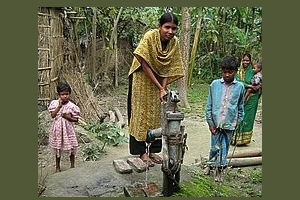 WASH program in Rural Bangladesh |
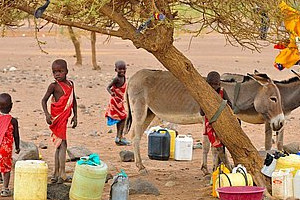 Scale up of Sustainable Water Access |
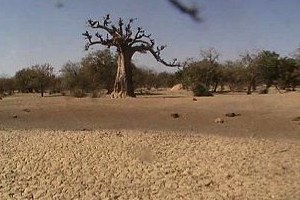 Etude technique d’avant-projet |
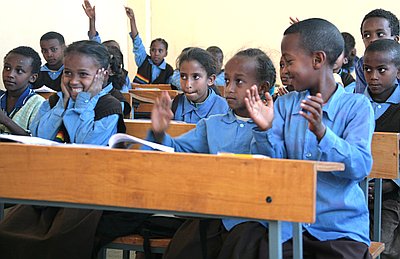 Rainwater harvesting for Nicolas School |
 Safe water supply for Fayaco, Senegal | ||
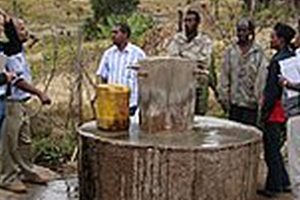 Rainwater Harvesting Capacity Center |
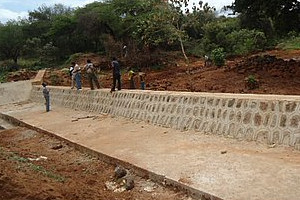 Support on WASH - in Miyo woreda |
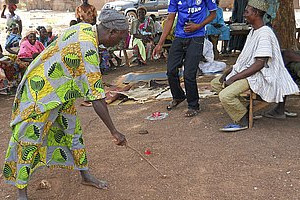 Upscaling CLTS for Healthy Communities |
 Partnership in WASH services delivery |
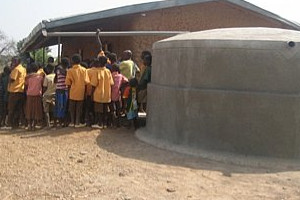 Northern Region WASH Programme | ||
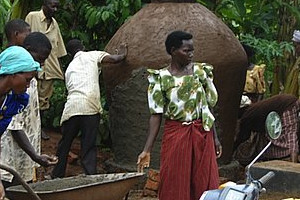 Raising awareness on rainwater harvesting |
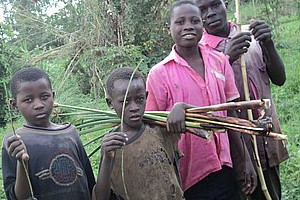 Wetland Management & Water Harvesting |
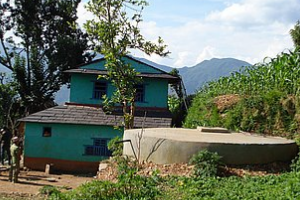 Rain Water Harvesting in Nepal |
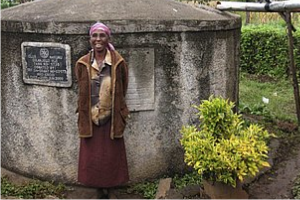 Rainwater Harvesting in Kenya |
 Rainwater harvesting in Guinee Bissau 2 | ||
Acknowledgements
Many of the tools, technologies, and projects on this page are courtesy of the Rainwater Harvesting Implementation Network.
RAIN is an international network with the aim to increase access to water for vulnerable sections of society in developing countries - women and children in particular - by collecting and storing rainwater.
Started in December 2003, RAIN focuses on field implementation of small-scale rainwater harvesting projects, capacity building of local organisations and knowledge exchange on rainwater harvesting on a global scale.

